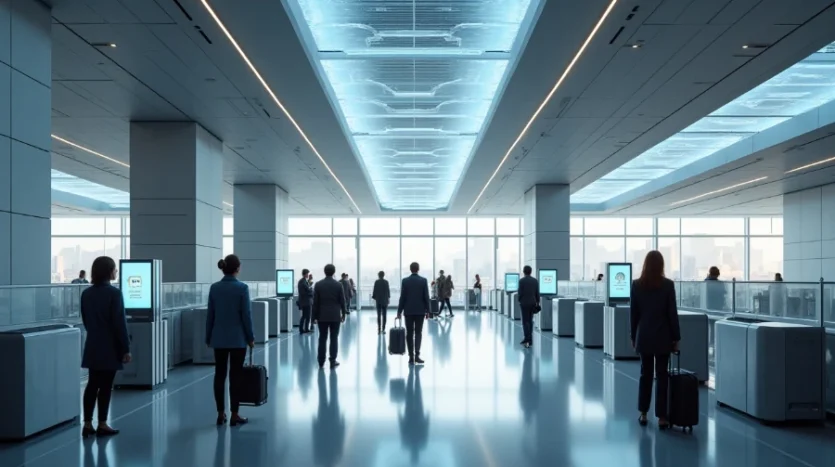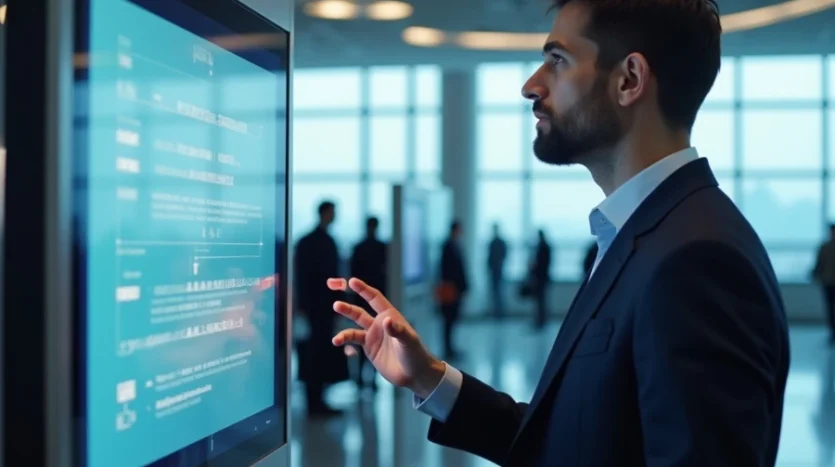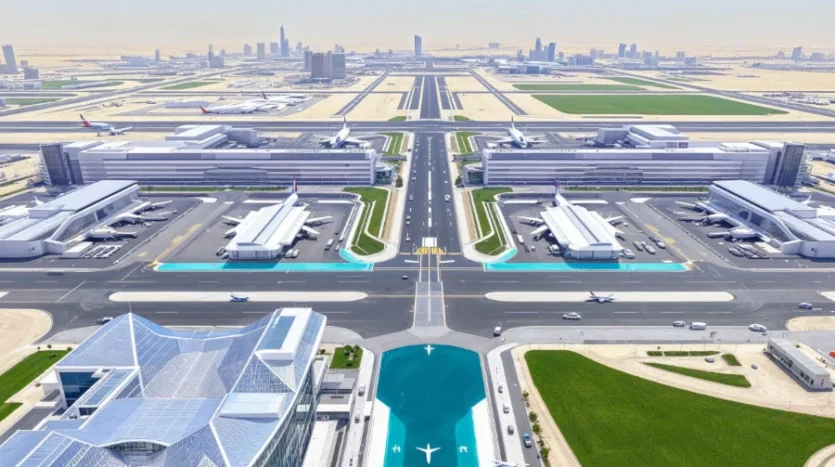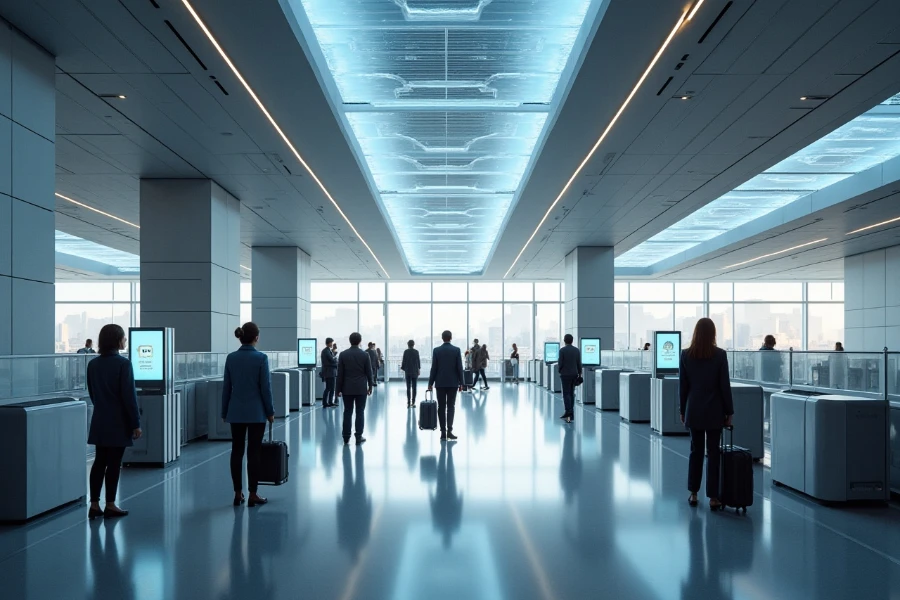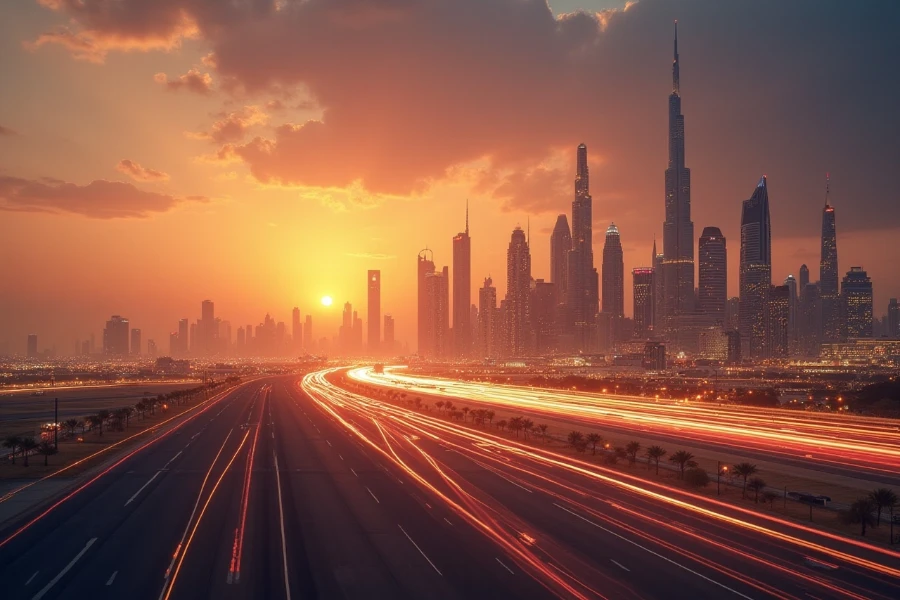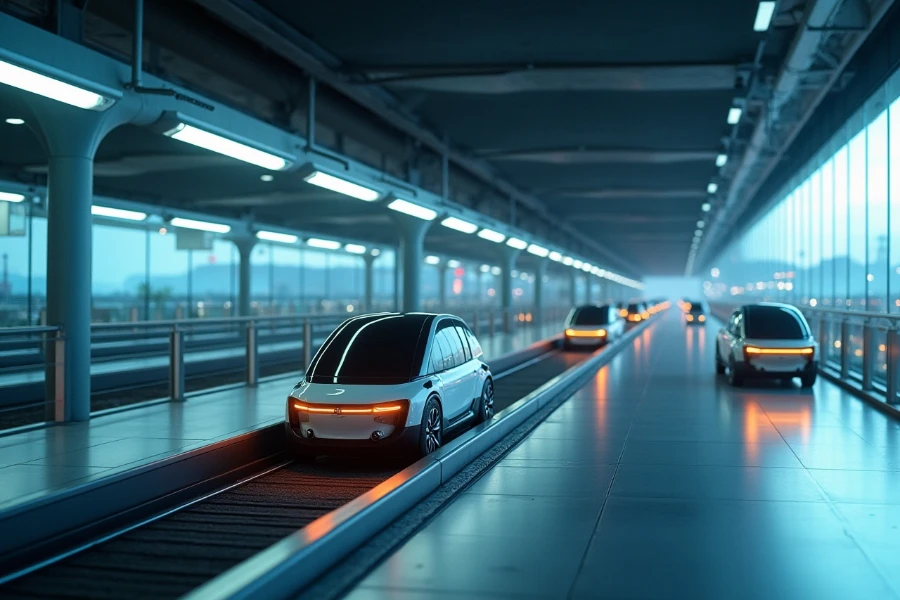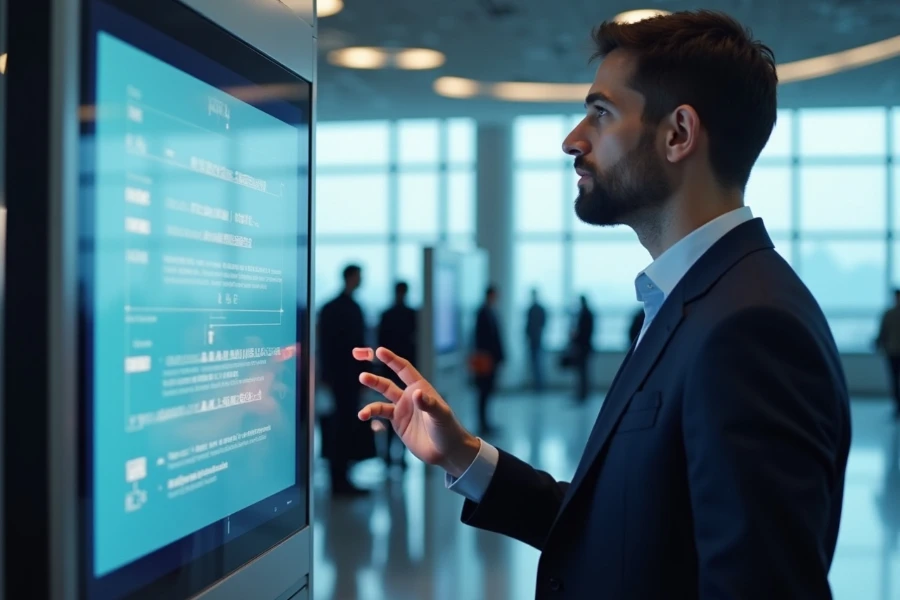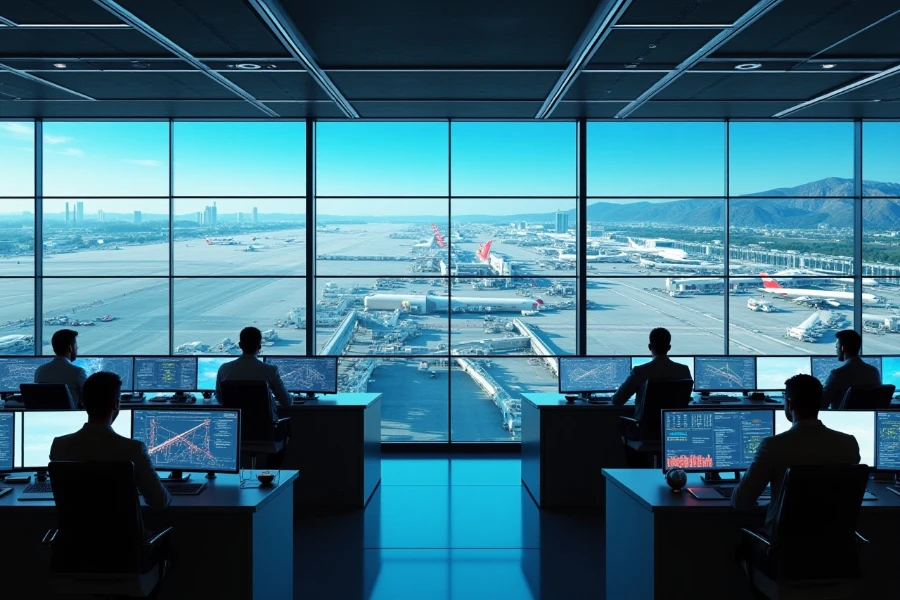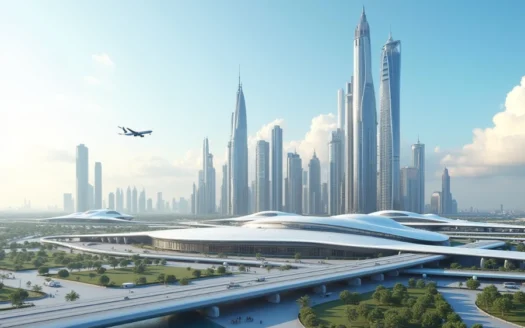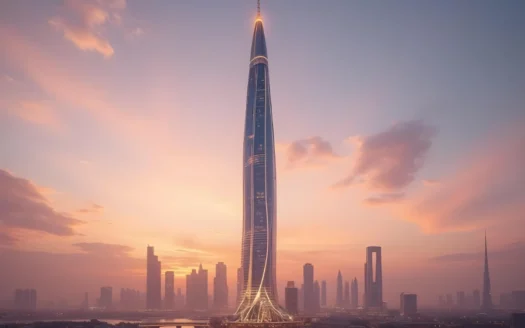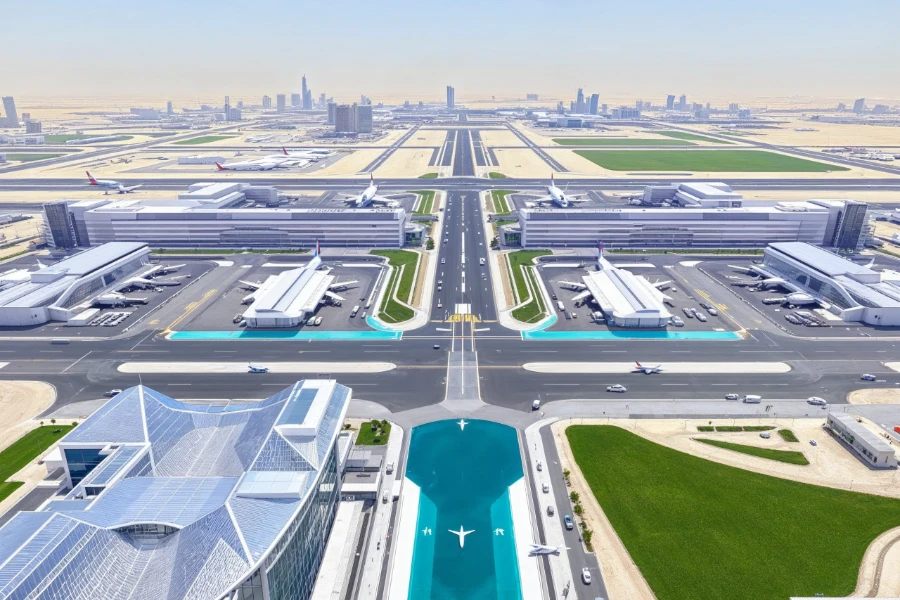
Al Maktoum International Airport: A Bold Leap into the Future of Global Aviation
Dubai has long been a city of superlatives—home to the world’s tallest building, largest shopping mall, and most luxurious hotels. Now, it is poised to redefine air travel with the Al Maktoum International Airport (DWC), a $35 billion megaproject set to become the planet’s largest and most advanced aviation hub. Slated to open its first phase by 2032, this airport is not just an infrastructure project; it’s a visionary blueprint for the future of cities, trade, and technology. Combining cutting-edge innovation, sustainability, and economic ambition, Al Maktoum International Airport promises to cement Dubai’s status as a global crossroads of the 21st century. Here’s an in-depth look at how this marvel is shaping up.
A Masterpiece of Scale and Design
Spanning an astonishing 70 square kilometers—five times the size of the current Dubai International Airport (DXB)—Al Maktoum International Airport (DWC) is designed to handle up to 260 million passengers annually by 2050. Unlike traditional airports, DWC adopts a modular “cluster” design, comprising two central terminals and seven concourses branching outward like a pair of open arms. This innovative layout allows seamless scalability: as demand grows, new concourses and terminals can be added without disrupting operations.
The airport’s Phase 1, set for completion by 2032, will establish the core infrastructure, including a state-of-the-art terminal, a second runway, and over 400 aircraft gates. Khalifa Al Zaffin, Executive Chairman of Dubai Aviation City Corporation, describes the design as “future-proof,” emphasizing its flexibility to adapt to evolving aviation trends. “We’ve moved away from the concept of a single monolithic terminal,” he explains. “Instead, we’re building an ecosystem where each concourse functions like a smaller airport, interconnected yet independent.”
This design philosophy ensures that DWC won’t just keep pace with global passenger growth—it will set the standard for how airports evolve in an era of rapid technological and demographic change.
The End of Traditional Travel: A Tech-Driven Revolution
At the heart of Al Maktoum International Airport lies a commitment to eradicating the friction points that plague modern air travel. Forget long queues, lost luggage, or confusing gate changes—DWC is engineered to make every step of the journey intuitive, efficient, and even enjoyable.
Biometric Brilliance
From the moment travelers step into the airport, facial recognition and AI-powered systems will identify them, verify their flight details, and guide them through check-in, security, and immigration—all without a single human interaction. “The concept of borders and counters will become obsolete here,” says Al Zaffin. “Your face becomes your passport, and your smartphone becomes your concierge.”
Robotics and Automation
Advanced robotics will handle everything from baggage sorting to maintenance. Automated carts will whisk luggage through underground tunnels directly to aircraft, minimizing delays and mishandling. Meanwhile, self-driving shuttles and Automated People Movers (APMs) will transport passengers between gates, with AI optimizing routes based on real-time flight data. For transit passengers, this means shorter connection times: if your next flight is at a distant concourse, an underground train will zip you there in minutes. With such futuristic infrastructure reshaping mobility, even property agents in Dubai are leveraging airport connectivity as a key selling point for nearby real estate developments.
Smart Logistics
Behind the scenes, an AI-driven “digital twin” of the airport will simulate operations, predicting bottlenecks and optimizing workflows. This system will coordinate baggage handling, fuel management, and even retail operations, ensuring that every resource is used with surgical precision.
Paul Griffiths, CEO of Dubai Airports, likens the experience to “traveling through a living organism,” where technology anticipates needs before passengers recognize them.
Economic Catalyst: Fueling Dubai’s Next Chapter
Al Maktoum International Airport is more than an aviation hub—it’s the centerpiece of Dubai South, a 145-square-kilometer “aerotropolis” designed to house one million residents and create 500,000 jobs. By colocating logistics, manufacturing, and tech sectors near Jebel Ali Port and free zones, DWC will create a seamless multimodal corridor linking air, land, and sea trade.
Job Creation and Urban Growth
The project is already generating economic momentum. Contracts worth over Dh1 billion have been awarded for Phase 1, including the construction of a second runway and critical infrastructure. Over the next decade, demand for skilled labor in engineering, AI, and sustainable design will soar, attracting talent globally. Dubai South, meanwhile, is evolving into a smart city with residential communities, tech parks, and hospitality hubs—all designed to support the airport’s workforce and passengers.
Trade and Tourism
Positioned near Expo City Dubai and key industrial zones, DWC will amplify Dubai’s role as a global logistics nexus. Freight operators will benefit from 24/7 cargo facilities capable of handling 12 million tons annually, while tourists will enjoy streamlined access to attractions like the Burj Khalifa and Palm Jumeirah. “This airport isn’t just about moving people—it’s about moving economies,” says Al Zaffin.
Sustainability: Building Green from the Ground Up
In a region where temperatures often exceed 40°C, Al Maktoum International Airport is pioneering eco-conscious aviation. Targeting LEED Gold certification, the project integrates sustainability into every facet of its design.
Energy Efficiency
Solar panels will blanket rooftops and parking structures, generating 30% of the airport’s energy needs. Smart grids will redistribute excess power to neighboring communities, while advanced insulation and shaded walkways will reduce cooling demands.
Water and Waste Innovation
A closed-loop water system will recycle rainwater and condensation from air conditioning, slashing potable water use by 50%. Meanwhile, AI-guided waste sorting robots will ensure 90% of airport waste is recycled or converted into energy.
Carbon Neutrality
Electric vehicles will dominate ground operations, from baggage tugs to passenger buses. The airport’s vast green spaces, including rooftop gardens and native plant landscapes, will absorb CO2 and reduce urban heat—a model for balancing industrial growth with environmental stewardship. This commitment to sustainability is also influencing urban planning trends, with eco-conscious properties for sale in Dubai emerging near key transit hubs to meet the growing demand for greener living environments.
“Sustainability isn’t an add-on; it’s the foundation,” asserts Al Zaffin. “We’re proving that mega-projects can coexist with the planet.”
Progress Report: From Blueprint to Reality
Since the project’s announcement, Dubai has moved swiftly to turn vision into reality. Phase 1 is already underway, with enabling works—land grading, drainage, and utility networks—completed in 2024. Key milestones include:
-
Second Runway: Completed in 2025, this 4.5-kilometer runway will handle simultaneous takeoffs and landings, boosting capacity during peak hours.
-
Terminal Substructure: Foundations for the main terminal are being laid, with superstructure contracts set for tender in late 2024.
-
Automated Systems: Tenders for the Automated People Mover (APM) and Baggage Handling System (BHS) will be awarded by 2025, integrating driverless trains and robotic sorting.
By 2030, the first concourses will begin trials, with full Phase 1 operations launching by 2032. Subsequent phases will expand capacity incrementally, ensuring DWC grows in lockstep with global demand.
A Glimpse into the Future: Life at DWC in 2035
Imagine arriving at DWC in 2035. Your autonomous taxi drops you at a solar-paneled terminal, where a holographic assistant guides you to a biometric checkpoint. Within seconds, you’re cleared for your flight to Tokyo—no queues, no paperwork. As you stroll through a lush indoor garden, a robot offers a coffee tailored to your preferences. Your luggage, checked via an app at home, is already en route to the plane.
Meanwhile, beneath your feet, driverless trains shuttle cargo from Jebel Ali Port to waiting freighters, while AI negotiates slot times with airlines in real time. Outside, engineers test hydrogen-powered aircraft at the adjacent innovation hub. This isn’t science fiction—it’s the future Al Maktoum International Airport is building today.
Conclusion: Dubai’s Legacy of Ambition
Al Maktoum International Airport embodies Dubai’s relentless drive to pioneer the future. By merging technology, sustainability, and economic foresight, the emirate isn’t just building an airport—it’s crafting a global template for smart cities. For travelers, DWC promises a frictionless journey. For businesses, it offers unparalleled access to emerging markets. And for the planet, it sets a new benchmark in green infrastructure.
As Khalifa Al Zaffin declares, “This is where the world connects.” With every runway poured and robot deployed, Dubai is ensuring that connection happens faster, smarter, and cleaner than ever before.

